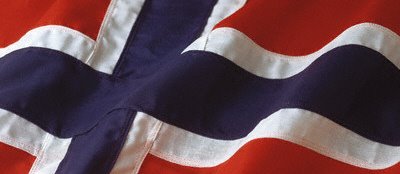Sights
Norway suffers heavily in this department for not being a feudalist country proper. Having almost no nobility, there are no castles, and the manors rarely impress the seasoned traveller. Going to Norway means seeing the scenery and a modest example of modern sights.
In Oslo: Oslo has tons of museums, and some of these are even worth going to:
- Folkemuseet is a museum for the people, and give an idea of how used to live in the time old traditions known as the eighties. Also, there are buildings from the 18th century onwards worth a good sightseeing.
- The Viking ship Museum: (note, most Norwegians pronounce Viking "Wiking", perhaps to sound less Norwegian. No one quite knows why) This museum harbours three authentic viking ships from roughly 800 AD. There are also some nice artefacts, but you will quickly find out that you paid a bit too much to see so few things. If you haven't discovered the relationship between price and quality before, Welcome to Norway!
- The Kon-Tiki Museum: The adventurer and self-styled archaeologist Thor Heyerdahl made a number of boats to prove the something that probably didn't happen could have happened. The most famous theory was that the Polynesians could have come from America by boats. While some might argue that few Inca Indians in their right mind would go on a chance mission in an ill-equipped boat, it matters little. Sense is second rank when one chooses one's national heroes.
- The Munch museum: By far the most known Norwegian artist, Munch was a tortured soul who provided scary and emotional pictures until he was given a government grant. Then he became boring and predictable. His scary period is worth a look.
While in the area, the Botanical Gardens are an OK stop only some metres away. There are thankfully several spots in this Garden which does not smell like an old lady. Don't bother about the Historical Museum, and only go to the National Gallery if you are interested in national romanticism at its closest border to kitch.
Other sights include the Opera House, a Gargantuan attempt at combining the Guggenheim and the Sydney Opera house. The result might seem as if a normal building had its roof cave in, but it is certainly original. The interior is a bit too 70s failing to be Art Nouveau. There's also the Vigeland Park (or Frogner park), which is a regular park with statues in various poses on it. The best way to experience the park is by looking at how the tourists make complete fools of themselves trying to appear funny beside the various statues. There's also the Palace, which looks surprisingly much like any other palace. There are some nice rooms and interesting beds, and if you have time to spare, why not. Lastly, there's the Akershus fortress, a 800 year old fortress. Most of it is modernized, and where else would one put the WW2 Resistance Museum?
In Trondheim:
- Nidarosdomen: The cathedral of Nidaros can compete with most Medieval Gothic churches in sheer spookiness. It is a beautiful cathedral worth entering, not for the sparse decoration (the little that remains after iconoclasm), but for the elongatec bows and the creepy feeling that ghosts and vampires are watching you from afar. As is to be expected, there is a story about a monk who hauts the cathedral, however most Norwegians write it off as a stunt combined with a number of anxious people, including a philosophy teacher. Their stories about the monk ar run-of-the-mill, and the cathedral needs no such stories to look haunted.
- Stiftsgården: Having become a monarchy in its own right, Norway decided to make a number of buildings to the new sovereign. One of which was a wooden building called "Stiftsgården", which is a relatively impressive building. As this place was the site for the wedding of Märtha Louise (Norway's colourful angel-seeing nut-job of a princess) and Ari Behn (the embodiment of a fortune hunter biting off much more than he could chew), it is no wonder why one of the room is in all pink.
- Munkholmen: Munkholmen is an island with a larrge building which has served as a place of excecution, a monastery, a fortress and a prison, or, as a trønder would say it, a family park. The place is full of history, most of which of a gory kind whti blind kings, executed usurpers, powerful Benedictine monks and, in the end, nazi anti-aircraft gunners. The non-alcoholic Norwegian beer Munkholm has nothing whatsoever to do with this place, which is rather sad.
In Bergen
- Bryggen: Bergen is nothing if not a fishmonger's city. The most famous site is the wharf where the Hanseatic League had their headquarter. While most of the buildings are much newer, a couple of buildings still standing are from the 16th century. Rumours have it they still smell of fish.
- Fisketorget: Unsurprisingly, another famous sight is where the fish is sold. If you don't care for fish, spending more than two hours in Bergen is superfluous.
- Bergenhus fortress: If you have been to Akershus fortress, go directly to the Rosenkrantz tower and Haakon's hall. Skip the rest. If you haven't, have a look around and skip Akershus fortress when or if you go to Oslo.
- Fløibanen: One of Bergen's most famous sights is a funicular. Or a sort of monorail, if you prefer. Take it to the top if you have the time. Say "it's really a great view" and take it down.
Minor sights like miles on miles of quaint, narrow side streets, the National Scene (theatre) and the aquarium (you wouldn't expect a zoo in this maritime millieu?) are okay, as is the main shopping street.
Other cities: There are no other cities in Norway. Some of the larger hamlets might be interesting. Stavanger is OK, and Tromsø is exotic at least for its northernmost position.

Ingen kommentarer:
Legg inn en kommentar